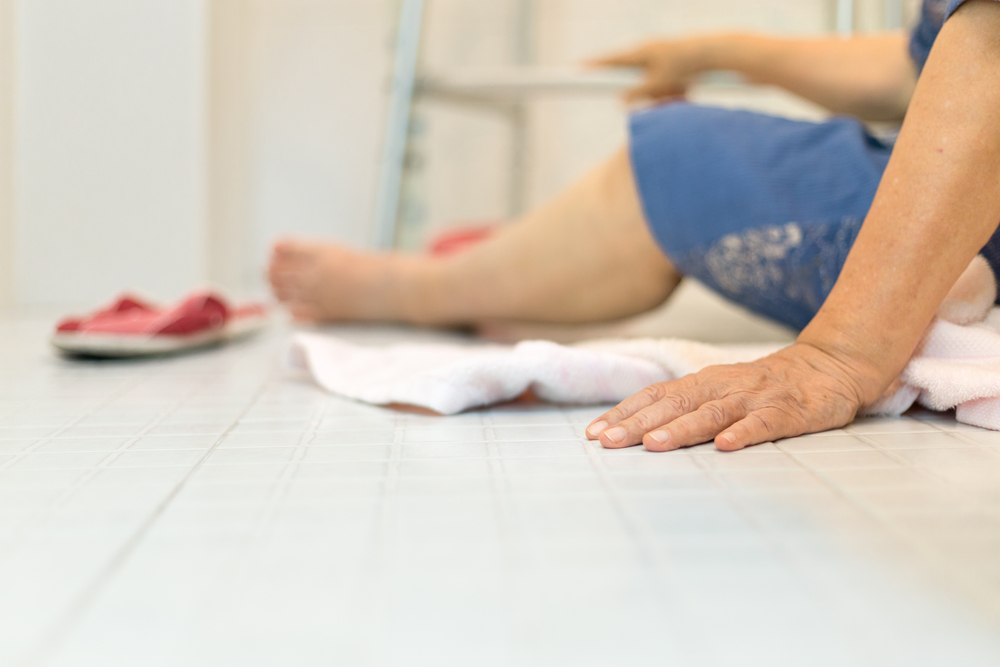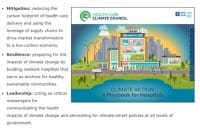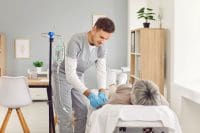To err is human. These words keep dancing around in my mind as I sit here as a family member rather than a nurse. I am in a haze of uncertainty and grief as I wonder what is going to happen to my grandfather. Will he recover from this? As I type these words, my grandfather is lying in the ICU, with an intracranial hemorrhage, seven broken ribs, and a fractured pelvis.
Is he going to survive? If he does miraculously survive, will he return to his baseline functioning self, including the ability to drive my grandmother to where she needs to go, doing yard work, and completing various home maintenance activities? While it’s true that my grandfather is 86 years old and has lived a long, full life, it’s also true that up until a few days ago, the world was still his oyster. He was living a meaningful life and possibly had many years left in him.
A serious fall
Four days ago, my grandfather was taken to the emergency department (ED) for what was suspected to be a seizure. After running various tests, it was determined that he would be admitted to the hospital for observation and further testing. As usual, the hospital was full and busy, and my grandfather had to wait for an extended period of time for his bed to be ready. My grandmother and aunt stayed with him until around two in the morning. He was sound asleep, snoring, and my grandmother (83 years old) was tired, so my aunt decided to drive her home so they could get a few hours of sleep.
My aunt and grandmother let the nurse know that they were leaving. Soon after they arrived home, my grandmother received a phone call from the nurse that my grandfather had suffered a devastating fall after attempting to get out of bed on his own. His injuries were severe—critical.
As a nurse who has worked many overnight shifts in an ED, I can image the scenario that occurred. My grandfather was in his room, perhaps with the curtain closed to allow for a more restful sleep. Gauging from the extent of his injuries, I suspect the bed was not in its lowest position. My grandfather probably woke up confused, thinking he was in his own bed. Like many men his age, he has a need for frequent trips to the bathroom in the middle of the night. He likely attempted to climb out of bed, maybe even pulling himself over the handrails, if they were raised. I have seen this happen before; it isn’t an anomaly.
My grandfather probably hit the hard floor headfirst, given the extent of swelling present on the entire side of his face and head, and critical bleeding in his head. The nurses heard a commotion, maybe a crash or a thud, or perhaps monitors alarming. I’m sure nurses and techs rushed into a scene that is a nightmare to any healthcare worker who has ever worked in a hospital.
A call for prevention
As a nurse, you know the phrase “fall prevention”. From my earliest days as a nursing student, these words were drilled into my head. As a student, I remember thinking “Oh, it would be bad if an elderly patient fell and got hurt while being cared for in the hospital.” I don’t believe I fully grasped how devastating a fall could be.
Over the years, as I gained more experience working as a nurse in various hospitals in various states, the gravity of the consequences of a hospital fall became more and more apparent to me. In morning huddles, I would hear of patient X in room X falling and suffering a broken bone, skin tear, or blow to the head. I would glance over to our “How many days since last fall” tracking board, the number now sitting at zero. I would feel a pit in my stomach and vow to keep a closer eye on my high fall risk patients and to drop what I was doing the moment I heard one of my patient’s bed alarms going off; these sentiments were likely shared by many other nurses.
None of us want our patients to fall. In fact, there are many layers in place to prevent such a thing from happening, from fall risk assessments on hospital admission to signage, bracelets, and bright yellow socks that alert all hospital personnel to a patient at high risk for a fall. We do huddles and patient handoffs to pass along fall risk information; use bed alarms, cameras, and gait belts; and chart within close proximity to our high fall risk patients.
Yet here I sit: My grandfather fell, and I don’t know if he’s going live beyond the next few days. His life is permanently altered, perhaps cut very short. Our family is devastated.
What are we, as healthcare workers, doing wrong? Patient falls resulting in serious injury are considered “never events”—they are preventable and should not ever happen. But despite prevention efforts, falls keep happening. I’m not exaggerating the severity or extent of his injuries, although I truly wish I were. I wish this weren’t our truth. Unfortunately, this is reality for our family, and we want to scream—loudly.
When I sat with my grandfather in the ICU 2 days ago, I don’t think he recognized who I was. I didn’t hear his bubbly “Hi Jenny-girl!” when I walked into his room. When I briefly lowered my mask to give him a better view of my face, and said “Hi Granddad, it’s me, Jen,” I didn’t see the recognition register on his face; I saw confusion. The few words he was able to speak didn’t make much sense.
Every time my phone alerts or rings, a feeling of dread overcomes me. I fear I’m about to receive the worst possible news. I’m overcome with constant thoughts about my grandfather and have a feeling of constant buzzing of fear and anxiety; all because of a fall; a fall in the hospital; a human error—a preventable human error. Falls are preventable. Let’s prevent them.
Note: A day after I wrote this, my grandfather died of his injuries.
Jennifer Anderson is a nurse in Delaware.


















